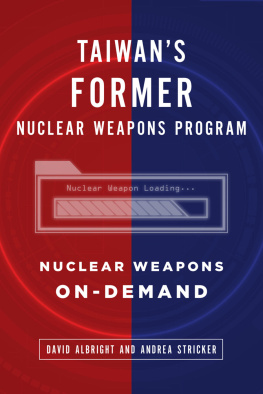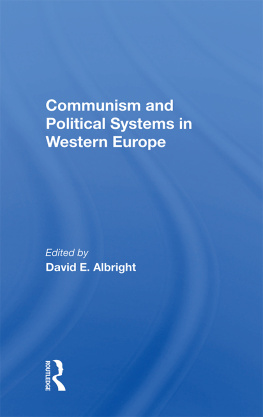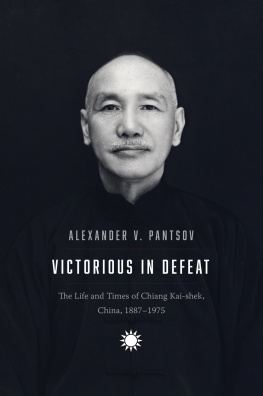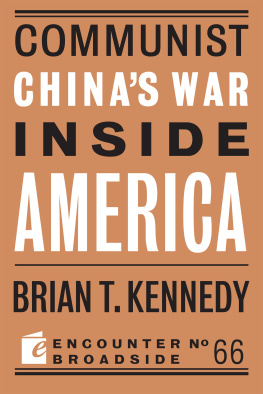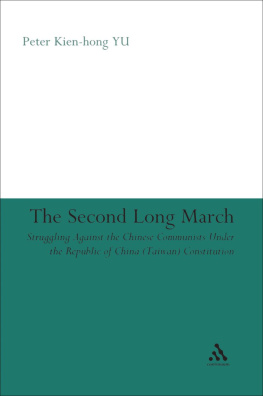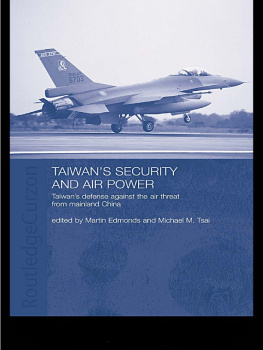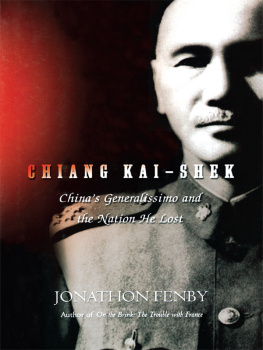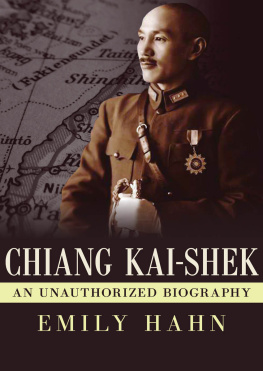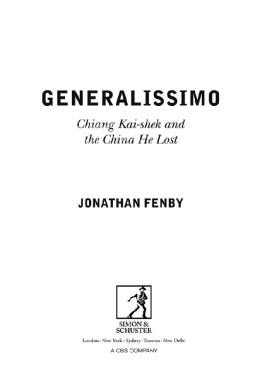
Taiwans Former Nuclear Weapons Program
Nuclear Weapons On-Demand
David Albright and Andrea Stricker
Institute for Science and International Security
2018
Institute for Science and International Security
The Institute for Science and International Security is a non-profit, non-partisan institution dedicated to informing the public about science and policy issues affecting international security. Its primary focus is on stopping the spread of nuclear weapons and related technology to additional nations and to terrorists, bringing about greater transparency of nuclear activities worldwide, strengthening the international non-proliferation regime, and achieving deep cuts in nuclear arsenals.
Copyright 2018 by Institute for Science and International Security
Institute for Science and International Security Press
440 1st Street NW
Suite 800
Washington, DC 20001
USA
www.isis-online.org
@TheGoodISIS
Cover design: Stewart A. Williams Design
Dedicated to all those who worked to ensure Taiwans nuclear weapons program was stopped.
TABLE OF CONTENTS
PREFACE
Thirty years ago, in 1988, the United States secretly moved to end once and for all Taiwans nuclear weapons program, just as it was nearing the point of being able to rapidly break out to build nuclear weapons. Taiwan claimed that it would never build nuclear weapons and said its nuclear program was for peaceful uses only, although it often heralded its goal of having the capability to make nuclear weapons, a policy best characterized as one of, we could but we will not. However, this policy hid active programs aimed at being capable of rapidly making nuclear weapons and maintaining a well-rehearsed nuclear readiness to build them on short notice. Despite Taiwans efforts to hide these activities, the United States was able to gather incriminating evidence that allowed it to act, effectively denuclearizing a dangerous, destabilizing program, that if left unchecked, could have set up a potentially disastrous confrontation with the Peoples Republic of China (PRC).
The year 1988 was only the final act in a series of U.S. actions stretching over more than two decades to prevent Taiwan from building nuclear weapons. The United States maintained a multi-decade commitment to stopping Taiwans sensitive and potentially destabilizing nuclear programs well before it could decide to build nuclear weapons. Worried about a possible war with the PRC, the United States worked to keep Taiwan far from an ability to separate plutonium or enrich uranium and achieve a rapid breakout capability to build nuclear weapons.
The United States obtained in 1977 Taipeis agreement to a series of norms or restrictions against reprocessing, enrichment, heavy water reactors, and nuclear weapons development that went well beyond the constraints found in the Nuclear Non-Proliferation Treaty. However, Taiwan, while seeming to agree, balked at these constraints. While the United States was working to end Taiwans nuclear weapons efforts, Taipeis relations with the PRC remained strained. Worse, Washington was moving to recognize the PRC as the official representative of China and building a new relationship with it while trying to ensure Taiwans security. However, Taiwans military was skeptical about U.S. actions. It was highly motivated to press onward toward developing a full nuclear breakout capability under the guise of a peaceful nuclear program, putting its activities in direct contravention with the norms created in the 1977 agreement.
Seeing through the lies of states secretly seeking nuclear weapons is as difficult today as it was then, and multiple U.S. interventions were necessary. To understand what Taiwan was doing, the United States carefully monitored its nuclear and military programs and engaged in intensive bilateral dialogues with the government and entities responsible for nuclear development. It also developed human sources deep inside the program. The United States carefully watched Taiwans foreign procurements and partnerships. Spy satellites scanned for new nuclear-related facilities and activities. The International Atomic Energy Agency (IAEA) played a key role in the 1970s in sounding the alarm about suspicious activities and ensuring the secret efforts remained ended after 1988.
Because so much of this story occurred in secret and extended over two decades, the full story of Taiwans nuclear weapons effort has not been publicly recorded. Now, after many years of work by the Institute for Science and International Security, and in parallel, diligent declassification efforts by the U.S. National Security Archive, and combined with the revelations of a number of former participants of the nuclear weapons program and information about U.S. efforts, a much more complete picture of the Taiwan case has emerged.
At the Institute, work on Taiwan started soon after its founding in 1992. One of its first investigative projects was understanding Taiwans nuclear weapons program in the 1970s and the role of the IAEA in uncovering secret nuclear activities tied to that program. Since that initial work, which led to a major report in the Bulletin of the Atomic Scientists by David Albright and Corey Hinderstein (Gay), the Institute continued to collect information on the program. It was determined to tell the technical history of Taiwans nuclear program and the efforts to thwart it in as authoritative of a way as possible.
This work necessarily led to many discussions with those involved in the effort on both sides of the Pacific. These discussions were enriched by the declassification of many U.S. State Department and other government cables dating up to the late 1980s. More recently, former members of Taiwans nuclear weapons program have decided to tell their stories.
One of the most important of those willing to discuss the case with the authors was Colonel/Dr. Chang Sen-i (known in the media and in public to date by an alternative transliteration, Chang Hsien-yi). In the 1980s, Colonel Chang was a deputy director at the Institute for Nuclear Energy Research (INER), where the nuclear weapons program was centered. After he became increasingly convinced that nuclear weapons were too dangerous for Taiwan to possess, he was recruited by the U.S. Central Intelligence Agency (CIA) in the early 1980s, and served as the United States personal eyes and ears of the program during this important period. To share the fullest picture of the story that is available to date, and to document how far Taiwan went, the authors obtained an interview with Col. Chang. During a week-long interview in Washington, D.C. in June 2017, Dr. Chang, or Gray the American first name he adopted after moving to the United States, shared an at times emotional journey about his role as an important historical figure in nonproliferation. He provided rich detail about the technical steps of the program, its achievements, and decision making in Taiwans covert nuclear weapons program, along with information about his controversial actions in ending it. He spoke movingly about his friendships with colleagues at INER and about the impact that leaving Taiwan had on his family. Only recently when he produced a memoir in Chinese about his role did his now adult children begin to truly understand what he had done for his country, and they thanked him. Now in his seventies, he believes that this is the appropriate time to share his story. We sincerely thank him for sharing his story and for allowing us to be a part of this remarkable history. We use information from this and subsequent interviews throughout the book. We also decided, due to the wide use of Hsien-yi in public literature, to use this spelling in the main part of the book. However, we will remind the reader periodically of his own English spelling of his name.
Next page
